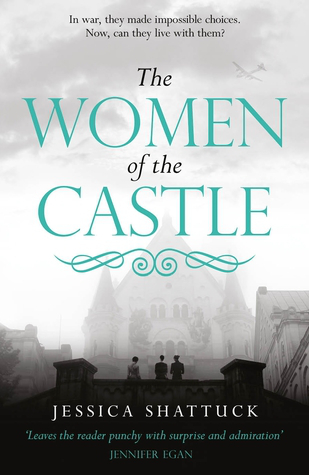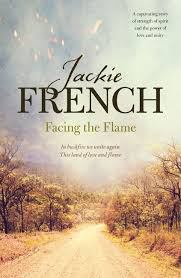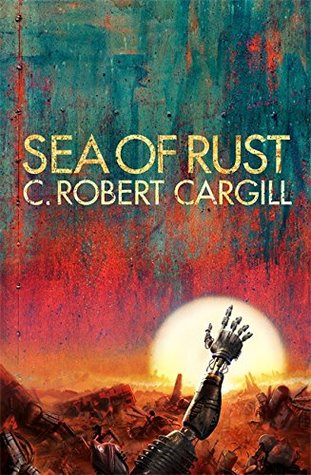[A side note: in the US, the title is The Women in the Castle.]
 Bonnier Zaffre UK hardback (image: goodreads.com)
Bonnier Zaffre UK hardback (image: goodreads.com)
I’ve always been interested in the literature of the Second World War, ever since a course on the Literatures of Genocide at university. I’ve read history books, personal accounts, and novels such as Alone in Berlin and City of Women; so, I was happy to accept a review copy of The Women of the Castle by Jessica Shattuck when it was offered to me (something I don’t do very often!). What appealed to me about this book were the fact that it is mostly set after the War, exploring its consequences, and that the story centres around the experiences of three German women who are thrown together by circumstance, and who have all had very different experiences of the War years.
Marianne and Benita are widows of resistors and met through their husbands just before the War. Shattuck quietly inserts the husbands into the notorious 20th July plot to assassinate Hitler, led by Claus von Stauffenberg. As we know, the plot failed, and Marianne and Benita’s husbands are executed. Ania’s Polish husband was also involved in the plot, and appears once at the beginning of the novel. He, too, died.
In May 1945 Marianne is living at her late husband’s family estate, Burg Lingenfels. She urgently sets about finding her fellow widows from the 20th July plot and bringing them to live with her at the Burg, to recover and rebuild their lives. She finds Benita, whom she met once before the War, still living in Berlin. Her apartment building has been bombed and she is only alive because a Russian Captain has taken a shine to her, and protects her from the other Russian soldiers who are ransacking the city and raping its women – though of course he rapes Benita, and she lives in squalor in her former home. Marianne literally marches in and takes her away; she also magically manages to find Benita’s son, Martin, who has survived the War in a Children’s Home run by the Nazis.
Ania is located by Marianne in a nearby Displaced Persons camp, along with her two sons. She seems a little reluctant to come to the castle, but once there she sets to work cooking and looking after everyone. She is stoic and quiet, like her children, and does not reveal much, if anything, about herself. She is probably the most complicated of the characters, and her story unfolds slowly throughout the book.
The women and children, including Marianne’s son and two daughters, live in a sort of uneasy harmony for a while. Despite their traumas and their wariness of each other, they become a funny sort of family. When a group of Russian POWs approach the castle looking for food and somewhere to sleep, the women are reminded that they are still vulnerable and that the after-effects of the War will continue for some time. They are safer in the castle than they were before, but the War can still reach them, and their lives are not ‘back to normal’ at all.
The timeline skips about a bit, with the prologue set in 1938, the bulk of the book set in 1945, with a few flashbacks to 1944, the 20s, and the 30s as we slowly learn more about each woman’s past. For me, Marianne and Ania were the most well-rounded characters, and felt like real people with purpose and influence on the story. Benita on the other hand has less impact on the story, and is not quite as full a character. The key thing about her is that as a young woman she was part of her local branch of the BDM, and considered to be the perfect example of a young German woman who would fulfil Hitler’s vision of a wife and mother – and yet her husband was a resistor, she spent time in prison, and was left to rot in bombed out Berlin, raped by Russians and separated from her son. Marianne saves them both, but even then, Benita is a shell of her former self. Perhaps she represents the death of that vision of perfect German womanhood – the follower of the famous motto “Kinder, Küche, Kirche”, who met the Aryan physical standards of the Reich and espoused its ideals. She was blindsided by the War and left broken afterwards. She is a sorry and somewhat wretched character, a figure of the broken domestic ideals of the Reich.
Marianne, meanwhile, is a pillar of strength, German and pragmatic through and through, refusing the submit to the hardships and sorrows. We learn that she was interrogated by the Gestapo more than once over her husband’s resistance activities, and campaigned endlessly to redeem him and those like him. Her determination to gather her fellow widows in 1945 perfectly demonstrates her desire to care for others, and to do what is right. She diligently makes lists of women to find, visits the Displaced Persons camps, and does wonderfully brave things like going back into Berlin to fetch Benita. Though she sometimes comes across as a bit hard and serious, I admired Marianne for her bravery and determination. She isn’t perfect, and makes her own mistakes, but tries her best and looks after other people.
As I said earlier, Ania is the most complicated of the characters. While the women are at Burg Lindenfels, we learn almost nothing about her past until the very end of that section. She is determined to carry on with life and not look back, and she does not seem to have time for affection and laughter. Her two sons, Wolfgang and Anselm, are serious children who grow into serious young men, taciturn and stoic. We learn more about Ania’s life through a series of flashbacks, and these not only paint a broader picture, they also go some way towards explaining her character and behaviour at the castle. I won’t give anything away as there is a lot to learn about Ania’s past. She is a brilliant character and I think she probably represents a lot of ordinary Germans who tried to do the right thing, but were caught up in the circumstances around them.
The last section of the book is set in 1991, and I think it rounds out the story nicely. A time jump at the end of a novel can sometimes feel a bit trite or sentimental, but in this case, it doesn’t. We see the central characters again, forty years later, and it connects their stories with our modern world, in Germany and beyond. We see how their generation adapts to the changing 20th century, and how their children deal with their parents’ past lives. There is a bit of philosophising about the march of time and the inevitability of death, and grief, and change, but Shattuck doesn’t overdo it.
The Women of the Castle is a satisfying novel full of the richness of life and the intricacies of personal experience. I loved the fact that although you get the overarching stories of the War, and each of the three women represent different archetypes, you still get a sense of their individual experiences and inner lives. Some things, like Ania’s past, are revealed more slowly than others, but that only makes the development of the story and characters more intriguing, and satisfying when you reach the end. I loved the fact that this novel covers so many different perspectives and experiences, but doesn’t feel overstretched or overreaching. It isn’t a very long book, only 353 pages, but it encapsulates so much without being overwhelming. I think it’s a wonderful addition to the genre, and covers a period in the lives of ordinary Germans that deserves more attention. I’d recommend this to anyone looking for a more literary take on the post-War experiences of German women. It’s also worth looking at the author’s Acknowledgements at the end of the book for more recommendations of books about the period, and the War itself.
*
Published in the UK by Bonnier Zaffre in May 2017, and in the US by William Morrow in March 2017. My copy was kindly provided by Bonnier Zaffre for review.
Purchase from Wordery, Foyle’s, and Blackwell’s.
Advertisements Share this:




